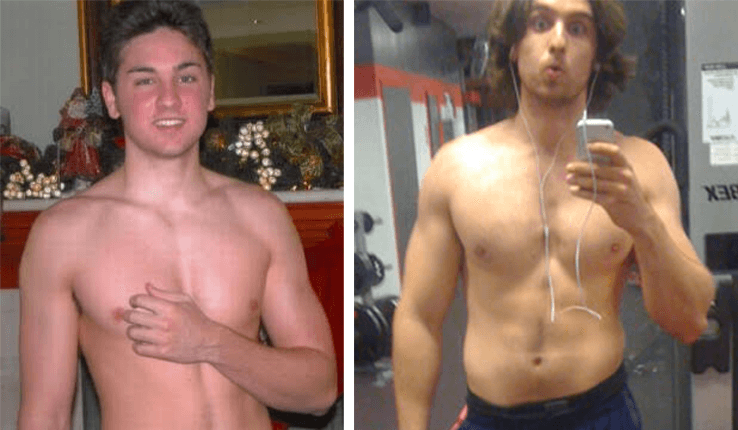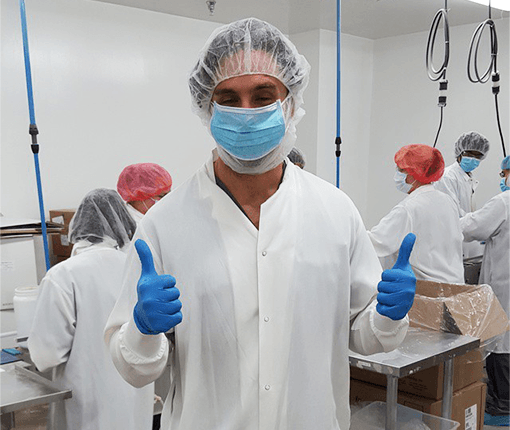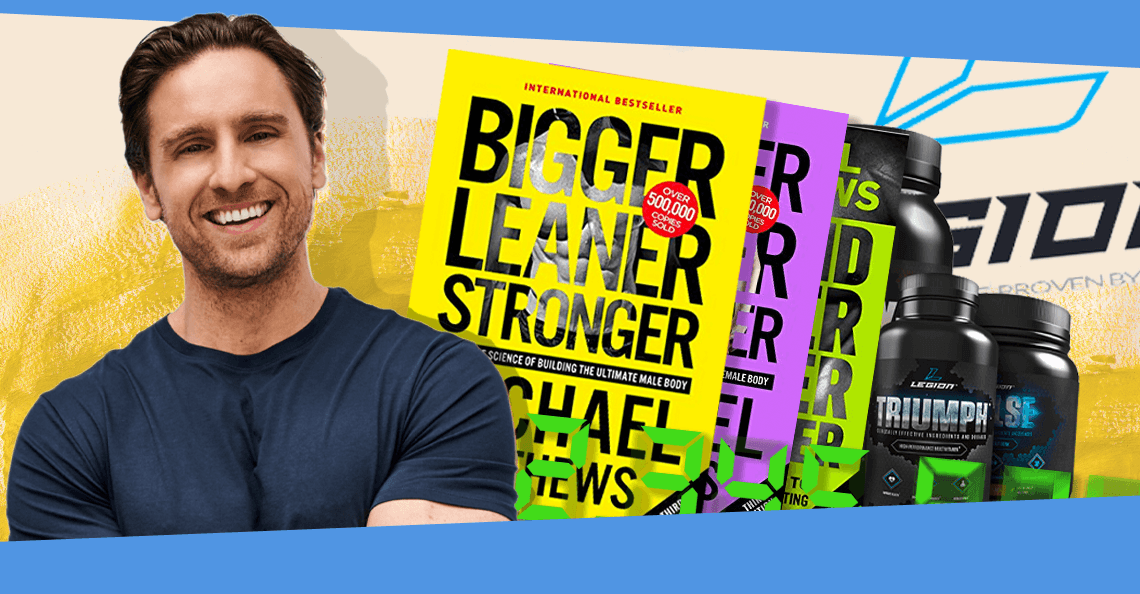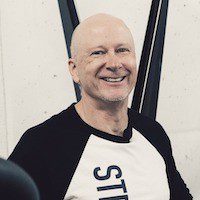Mike Matthews started his fitness career like most personal trainers: He went to the gym, and he lifted weights.
Eventually, like countless fitness experts before him, he figured things out, reached single-digit body fat, and decided to help other people reach their own physique goals.
But he didn’t want to do it the traditional way—trading his time for money by training clients in a gym.
So he wrote a book.
Here’s what he’s done since he self-published Bigger, Leaner, Stronger in 2012:
- Sold close to 2 million copies of his books
- Built a massive audience through his articles, podcasts, and videos
- Launched Legion, a supplement company that generates $20 million a year in sales
Read on to see how Matthews did it, and the lessons you can apply to your own fitness business.
Lesson #1: You never know what you can do until you try it
Mike Matthews has a familiar origin story for a fitness professional:
- Lifted two hours a day, five days a week, following routines he found in bodybuilding magazines and websites
- Spent thousands on useless supplements
- Got good-not-great results
- Decided to take his training more seriously, consulted fitness research instead of bro lit, changed his diet and workouts, and got down to single-digit body fat

Mike Matthews was just getting started in his late teens (left). By his mid-twenties (right), he was still figuring out the system he wrote about in Bigger, Leaner, Stronger.
Now here’s what’s different about Matthews:
He ran a small, highly specialized publishing company, where he created employee training materials for people who work in medical offices. “I tried to break the job down into bite-sized pieces they can learn and practice,” he says.
So when he decided to write Bigger, Leaner, Stronger in 2012 (“kind of on a whim,” he admits), “I already had experience in taking things that appear to be complex and breaking them down to make them doable.”
His pitch to readers was simple: “If you do these things for a month, you’ll see results.” His price was low (just 99 cents for the ebook), and his expectations were modest.
“To me, it was a coin flip between ‘zero’ and ‘not zero,’” he recalls. “I think it sold 20 copies in the first month, and I was excited.”
But by the end of the year he was selling 3,000 to 4,000 copies a month. His marketing, he says, was “100 percent word of mouth. I had no platform, connections, or advertising budget.”
Soon it was time for the next step: launching a website and building an audience.
Here are four takeaways from Matthews’ success that you can apply to your own fitness business:
Use your non-fitness skills to separate yourself from the competition
Each of us has unique interests, experiences, knowledge, and abilities that have nothing to do with training. For Matthews, it was writing, editing, and publishing.
For you it might be website design or programming. Marketing or sales. Acting or public speaking. Conducting or explaining science. Engineering or construction.
None of those things relates directly to training clients or writing workout programs. But any of them can help you create a fitness product and give you an advantage over coaches who don’t have the same skills.
Make it easy for your customers to use your product or service
Take whatever time you need to give your audience simple, clear explanations of what you want them to do. Hire an editor if you can’t do it yourself. The more work you do on the front end, the better the response you’ll get on the back end.
Have modest expectations, and celebrate your wins
If this is your first product, “not zero” sales could be a win. Once you have any customers, readers, or clients, you have a chance to prove you can help them improve their fitness. That’s worth celebrating.
Listen to your customers
Matthews took a leap of faith when he wrote and published Bigger, Leaner, Stronger, which he describes as “the book I wish someone had given me when I was 17 or 18.” (He was 28 at the time.)
Not only did it take off with the intended audience of male lifters—a remarkable accomplishment for an unknown, first-time author—it attracted the interest of an unintended audience: women.
They asked him for their own version, minus the “bigger” part. He obliged with Thinner, Leaner, Stronger, and almost immediately it too was selling by the thousands.
Lesson #2: Your content is your most important link to your customers
Starting in 2013, Matthews wrote two long, research-based articles a week for his website. It took a lot of work, but the effort paid off.
“A lot of the fitness content published online back then was pretty thin,” he says. “I knew Google wanted longform content, so I decided to focus on that. I also enjoyed it, so that helped too.”
The organic reach from Google’s search algorithm brought hundreds of thousands of visitors to his site every month, allowing him to build a large and responsive email list.
That paid off a year later, when he launched his supplement company.
Three takeaways from Matthews’ success with content creation and audience engagement:
Treat each customer like your only customer
Matthews included his email address in his first book and made a point of responding to every email.
“There was a time when I was spending four or five hours a day answering emails,” he says. “I think that personal touch matters.”
That’s especially true with your “first responders”—the customers who found you at the beginning and have been with you ever since. They feel a personal connection to you and your products. Make sure they know the feeling is mutual.
Don’t outsource the most important part of your business
To this day, Matthews writes every email his company sends to his list.
“There’s a subjective element to it,” he says. “I have a specific style and voice.” Readers would recognize an employee trying to imitate it.
Keep your content up to date
Matthews has now published three editions of Bigger, Leaner, Stronger and Thinner, Leaner, Stronger. Other updates are either in the works or on the horizon.
He also has a recently published book, Fitness Science Explained, which he coauthored with James Krieger.
Mixing new and updated content allows you to keep your existing audience engaged while also bringing in new customers, who may not know or care that a book or article was originally published years ago.

Matthews' latest book, Fitness Science Explained, is comprehensive, if perhaps not as dazzling as the photo suggests.
Lesson #3: Your customers will point the way to brand growth
Matthews started Legion, his supplement company, for the same reason he wrote his first book: to fill a gap he saw in the marketplace.
What’s interesting is how he realized the gap existed.
He had a “recommendations” section on his website where he told readers about books, movies, equipment, or anything else he liked.
“What I saw is that people were buying all kinds of stuff based on my recommendations,” he says. That included supplements, even though his recommendations were tepid at best. “If Legion had existed, I would’ve just recommended them.”
But because it didn’t exist, he decided to give it a shot, and launched Legion in 2014. Fueled mainly by email marketing and organic reach—both of which were possible because of the detailed content he regularly published on his site—it now generates $20 million a year in sales, with growing brand awareness and improving profit margin.
Two (very big) lessons you can take from Matthews’ launch of a new business:

Matthews visits the assembly line for Legion, his eight-figure supplement company.
Make it part of your story
Matthews’ brand was based on telling the truth about body transformation, including the limited role of supplements.
In fact, from the very beginning, he had emphasized his disappointing experience with supplements—how he’d spent thousands on overhyped products endorsed by bodybuilders and filled with dubious ingredients.
How strange would it be for him to start selling his own pills and powders?
To get around that potential disconnect, he based Legion’s marketing on what his products didn’t have:
- No artificial sweeteners or coloring
- No “proprietary blends” to avoid telling consumers exactly what’s in the product
- No ingredients that aren’t backed by published studies
- No “fairy dusting” of active ingredients; any ingredient they include matches the effective dose shown in research
That left no gap between his personal story and his business. He still tells customers that diet and training are the keys to improving their physiques, and that “supplements are, at best, supplemental.”
Don’t sell a product you wouldn’t use
Celebrity endorsements, more often than not, insult our intelligence.
You know the 280-pound bodybuilder with 5 percent body fat didn’t get that way because of the supplements he hawks, just as you know the billionaire athlete doesn’t really drive a Buick or wear cotton T shirts you can buy at Target.
But if you recommend it, you’re the celebrity. And you’d better make damned sure it’s a product you either use or would’ve used when you were part of the target market. If you can’t honestly say “I wish I’d had this product” when you were younger, skinnier, or had the goals the product supports, you shouldn’t endorse it to your audience.
This applies to any product someone can buy on your site, whether it’s your own or something you sell as an affiliate.
You worked hard for your authority. You earned your audience’s trust and respect. Don’t boost your bottom line by treating them like suckers.
To succeed with a new business, do the difficult things well
Matthews now has more than 30 employees and contractors who work for Legion and his publishing business, which he balances with a busy life at home with his young family.

Matthews at home with his wife, daughter, and son.
But no matter how big the operation gets, what makes it work is the close connection to their customers.
“We make millions of dollars from email marketing, but we don’t have a very sophisticated system,” Matthews says. It’s possible because “we’ve done some of the more difficult things well. These aren’t the things you do if you want to build or scale a business quickly.”
Creating deeply researched content, and continually updating it, is the most difficult. The payoff, he says, is a resilient business that’s “not dependent on the fickleness of advertising.”
Nor has he depended on the fickleness of the publishing industry, although that’s about to change. “I’m doing my first traditionally published book next year,” he says. “I had opportunities, but it never made sense until now.”
The book, called Muscle for Life, is targeted to adults over 40. Unlike Bigger, Leaner, Stronger and its follow-ups, it’s not for a lifter who’s at 15 percent body fat and wants to get down to single digits. The more likely reader, he says, is someone who has 40 pounds to lose and is relatively new to exercise and healthy nutrition.
But the goal is the same, even if the audience is different: “Taking things that appear to be complex and breaking them down to make them doable.”
It’s among the most valuable skills a coach can have.










